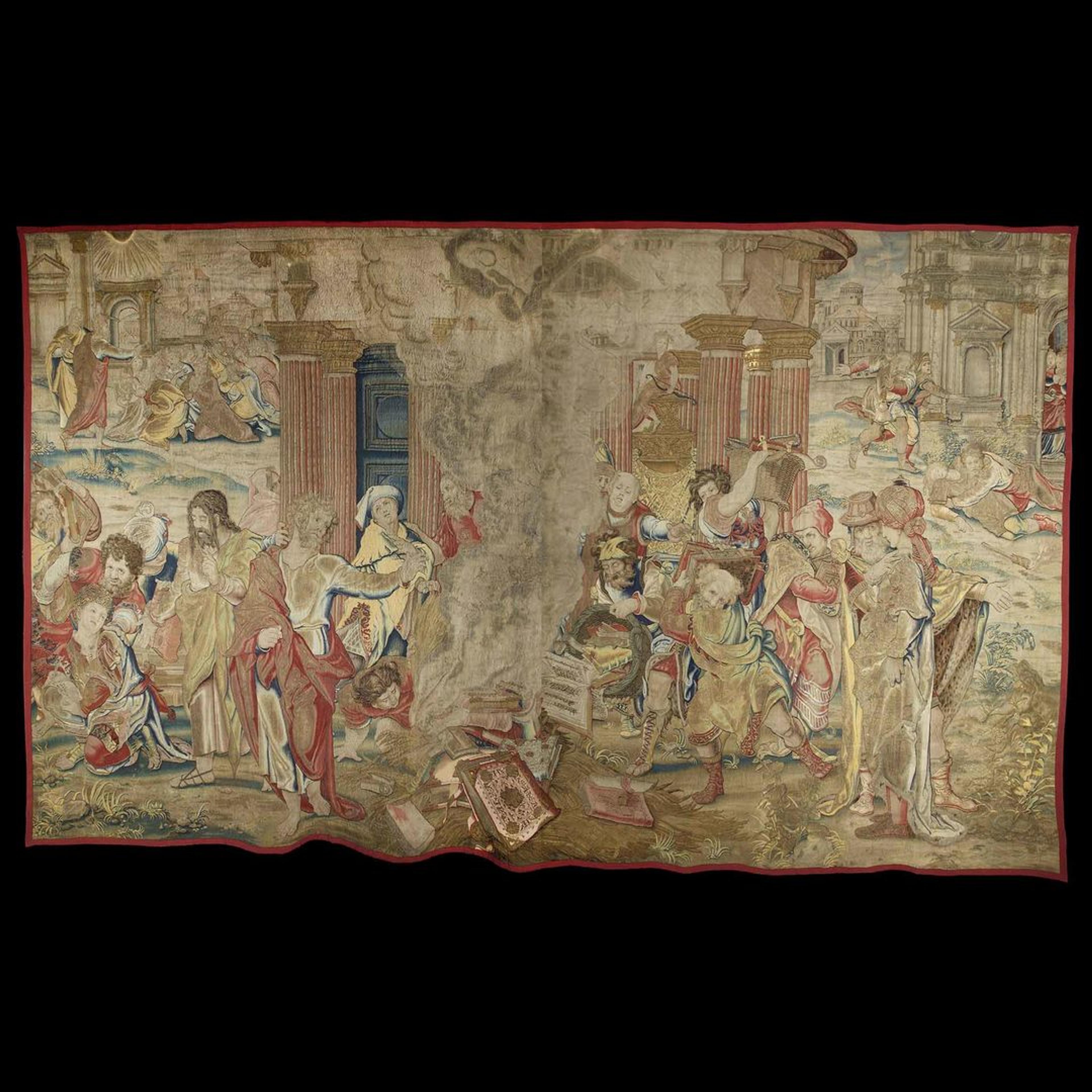Audio Guide

585. Life of Saint Paul: The Burning of Books at Ephesus, Pieter Coecke van Aelst
NARRATOR:
In this tapestry, the New Testament figure St Paul leads Christian converts to burn the pagan books from the library of Ephesus – one of the largest libraries of the ancient Roman world. Paul himself stands just left of center, draped in red, and gesturing towards the bonfire. Behind is the columned library.
Tapestry was one of the most expensive and sought-after art forms available to wealthy Tudors. This example belonged to Henry VIII himself.
For this royal commission, the weavers have used costly metal threads: silk threads that have been wrapped in thin strips of silver and gilded silver. Elizabeth Cleland.
ELIZABETH CLELAND:
The tapestry would be best appreciated viewed in candlelight, glinting and glittering.
What I find really compelling about this tapestry is the synergy between the design and weaving. It was designed by Pieter Coecke van Aelst, who’s one of the greatest artists working in Antwerp at this period, and its got this very fluid, dynamic composition: the figures seem to ripple across the surface. But the tapestry weavers, who are working in Brussels, which is the great center of weaving at this point, have really risen to the challenge. So, you know, when you look at the smoldering bonfire of books, it’s almost as if you believe that the library at Ephesus continues behind that smoke. It’s as if you can smell the wood smoke and hear the crackle and feel the smoke pricking your eyes. I think it’s an incredibly dramatic, superlative example of the collaboration between the great designer and great weavers. And certainly, obviously, Henry VIII really thought so too (laughs) because he spends so much money buying so many tapestries of this caliber, most of which have not survived.
###